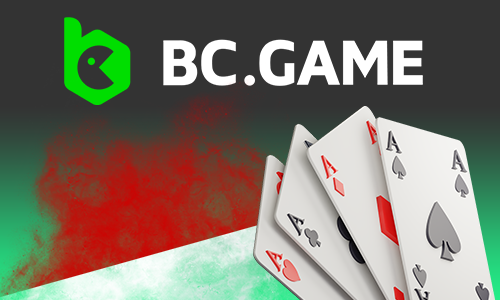Mar 29, 2025
Exploring the Impact of Bc.G on Business Strategy and Growth

Exploring the Impact of Bc.G on Business Strategy and Growth
In today’s rapidly evolving business landscape, organizations face an array of challenges and opportunities. One of the frameworks gaining traction in this context is Bc.G, which stands for Business Competitiveness and Growth. Bc.G provides a structured approach for businesses to enhance their competitive edge while simultaneously fostering sustainable growth. Bc.G https://bcg-id.com/ This article delves into the facets of Bc.G and how it can serve as a guiding principle for organizations aiming to thrive in a highly competitive environment.
Understanding Bc.G
The concept of Bc.G is built on the premise that sustained competitive advantage is not just about outperforming rivals but also about leveraging internal capabilities and market dynamics. Bc.G implies a holistic view of business growth, encompassing aspects like innovation, operational efficiency, and market responsiveness. It challenges businesses to innovate constantly and seek new opportunities in the ever-changing marketplace.
The Importance of Competitive Analysis
One of the fundamental components of the Bc.G framework is competitive analysis. This process involves thoroughly examining competitors’ strategies, strengths, and weaknesses. By understanding the competitive landscape, organizations can identify areas for improvement and differentiation. Tools such as SWOT analysis—evaluating strengths, weaknesses, opportunities, and threats—are commonly employed in this phase.
Fostering Innovation

Innovation is at the heart of Bc.G. Businesses must continually innovate to stay relevant and meet the evolving needs of their customers. This involves investing in research and development, encouraging creativity among employees, and staying attuned to technological advancements. A culture that supports experimentation and embraces failure as a learning opportunity can significantly enhance an organization’s innovation capabilities.
The Role of Technology
In the digital age, technology plays a crucial role in enabling innovation. Businesses leveraging emerging technologies such as artificial intelligence, machine learning, and big data analytics can gain valuable insights into customer behavior and market trends. These insights are critical in developing products and services that resonate with target audiences.
Operational Efficiency
Efficiency is another key pillar of the Bc.G framework. Streamlined operations not only reduce costs but also enhance customer satisfaction by enabling quicker delivery times and better service. Businesses should adopt practices such as lean management and continuous improvement to optimize processes. This involves identifying bottlenecks, reducing waste, and ensuring that resources are allocated effectively.
Supply Chain Management
Effective supply chain management is integral to operational efficiency. Organizations must ensure that their supply chains are resilient and responsive to changes in demand. This requires collaboration with suppliers, investment in logistics technology, and the adoption of agile methodologies to quickly adapt to market fluctuations.
Market Responsiveness
In an era of rapid change, the ability to respond swiftly to market dynamics is essential for maintaining competitiveness. Businesses must remain vigilant and adaptive to changes in consumer preferences, economic shifts, and emerging trends. This agility can be achieved through effective market research and consumer feedback loops, enabling organizations to pivot their strategies when necessary.
Customer-Centricity

A customer-centric approach is vital for fostering market responsiveness. Understanding customer needs and preferences through surveys, social media engagement, and direct feedback can inform product development and marketing strategies. Companies that prioritize customer satisfaction are better positioned to enhance loyalty and drive repeat business.
Integrating Bc.G into Business Strategy
Integrating Bc.G into an organization’s overall strategy requires commitment at all levels. Leadership must champion the Bc.G principles, fostering a culture that prioritizes innovation and efficiency. Additionally, organizations should set clear objectives and key performance indicators (KPIs) to measure progress and success.
Cross-Functional Collaboration
Implementing Bc.G effectively involves collaboration across various departments. Marketing, operations, finance, and human resources must work together to align their strategies with the organization’s growth objectives. Cross-functional teams can provide diverse perspectives, leading to more comprehensive solutions and strategies.
Case Studies
To illustrate the effectiveness of Bc.G, consider the following case studies:
- Company A: By implementing a robust competitive analysis process, Company A identified an underserved market segment. This insight led to the development of a new product line, resulting in a 30% increase in market share within two years.
- Company B: Investing in new technologies enabled Company B to streamline its operations significantly. The adoption of automation in manufacturing reduced costs by 20% while enhancing product quality and delivery times.
- Company C: With a focus on customer-centricity, Company C improved its engagement strategy, resulting in a 40% increase in customer satisfaction ratings and a subsequent rise in repeat purchases.
Conclusion
In conclusion, the Bc.G framework presents a comprehensive approach for businesses striving for competitive advantage and sustainable growth. By emphasizing innovation, operational efficiency, and market responsiveness, organizations can navigate the complexities of the modern business landscape more effectively. As companies continue to adapt to changing market conditions, embracing Bc.G can be a decisive factor for long-term success. By fostering a culture that values collaboration and agility, businesses can position themselves for future growth in an increasingly competitive world.